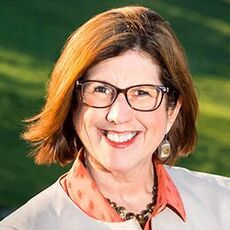
Processing Your Payment
Please do not leave this page until complete. This can take a few moments.
- News
-
Editions
View Digital Editions
Biweekly Issues
- December 1, 2025
- Nov. 17, 2025
- November 03, 2025
- October 20, 2025
- October 6, 2025
- September 22, 2025
- + More
Special Editions
- Lists
- Viewpoints
-
Our Events
Event Info
Award Honorees
- Calendar
- Biz Marketplace
How to use LinkedIn to grow your network — and bolster in-person connections
In another column, I explained how LinkedIn is a useful social media platform for generating sales. And it’s true: LinkedIn can be monetized in a way that grows your business and strengthens your brand through your own “thought leadership.”

But there is much, much more to LinkedIn than money. Too often, advertisers, marketers, and public relations practitioners look at social media platforms exclusively through the lens of self-interest — how they can benefit me, me, me. Right away, people ask: How can I turn connections into cold, hard cash?
Stop. Take a step back. Look at the bigger picture — beyond the “me.” At its core, LinkedIn is a social media platform that allows you to create and cultivate meaningful connections professionally or personally. It is an extremely valuable tool for growing your network. As the saying goes, your network is ultimately your net worth, and LinkedIn can help you on both fronts.
But don’t just think about the final destination. When it comes to LinkedIn, it is more important to focus on the journey of meeting new people and keeping in touch with existing contacts. For example, even if you’re shy (which I’m not), LinkedIn is a wonderful way to build a network without necessarily having to speak with people in-person.
But, if you know me, I love talking to people face-to-face and asking them about themselves. On LinkedIn and in “real life,” it is important to engage with people in a reciprocal way, listening to to others and having them answer tailored questions. Transactional relationships are superficial; you ideally want to build deeper, more lasting connections. And these connections represent a two-way street.
Keep that in mind when you connect with people or message them. Ask, ask, ask. Listen, listen, listen. Actually express interest in where they’re from, what they do, and where they hope to go in the future. Find out what you have in common, and then remember those common traits, interests, or experiences.
I have made it a practice to actually link with people in real time at networking events, asking them to link back right away. Since the COVID-19 pandemic, fewer and fewer people carry old-fashioned business cards, and not that many people have adapted with electronic cards, so sharing LinkedIn information is the best way to connect and remember that person’s name when you need it later on.
Let’s face it: Forgetting names is easy, especially at networking events with dozens of people. A real-time LinkedIn connection improves recall. Your memory needs all the help it can get.
Not only will you remember others, but they will remember you. You can expose others to your recent op-ed columns or interesting blog posts. You can share news in a way that conveys your thought leadership — the fact that you are an expert in your given field. People regularly seek out expertise on LinkedIn, where the true experts know how to position themselves as subject matter authorities through blog posts, op-eds, videos, and other forms of clickable content.
Then, once you have actually mastered the connection game (without seeking monetary benefits), it becomes time to think about monetization. Maintaining a large social network is called social capital for a reason. It is an asset on your personal balance sheet, setting you up for more professional success. Connecting with people who know, like, and trust you can lead to referrals, recommendations, and new business opportunities. Prospects may become clients and customers.
But, even if they’re not paying you, you can turn to valuable LinkedIn connections for background information or advice on a particular issue. Perhaps a LinkedIn contact can help solve a problem at work, or at home for that matter. You never know with the power of LinkedIn!
Ultimately, in-person connections still matter. They are the most valuable types of connections, even though LinkedIn is indispensable in today’s economy. Face-to-face interaction is where the real magic happens between two people. The chemicals that are transmitted between people in-person cannot be transmitted online — oxytocin, serotonin and dopamine, or what I call the “happy hormones.” They spark true chemistry.
But you can leave room for both. The most well-rounded networkers excel online and in-person, and that can be you too. Trust in LinkedIn to get you there, but trust in yourself more than anything else.
About the author
Nancy Marshall, owner of Marshall Communications, is a frequent Mainebiz contributor. She can be reached at nmarshall@marshallpr.com
Mainebiz web partners
Related Content

The Giving Guide
The Giving Guide helps nonprofits have the opportunity to showcase and differentiate their organizations so that businesses better understand how they can contribute to a nonprofit’s mission and work.
Learn More
Work for ME
Work for ME is a workforce development tool to help Maine’s employers target Maine’s emerging workforce. Work for ME highlights each industry, its impact on Maine’s economy, the jobs available to entry-level workers, the training and education needed to get a career started.
Learn More
Groundbreaking Maine
Whether you’re a developer, financer, architect, or industry enthusiast, Groundbreaking Maine is crafted to be your go-to source for valuable insights in Maine’s real estate and construction community.
Learn more-
The Giving Guide
The Giving Guide helps nonprofits have the opportunity to showcase and differentiate their organizations so that businesses better understand how they can contribute to a nonprofit’s mission and work.
-
Work for ME
Work for ME is a workforce development tool to help Maine’s employers target Maine’s emerging workforce. Work for ME highlights each industry, its impact on Maine’s economy, the jobs available to entry-level workers, the training and education needed to get a career started.
-
Groundbreaking Maine
Whether you’re a developer, financer, architect, or industry enthusiast, Groundbreaking Maine is crafted to be your go-to source for valuable insights in Maine’s real estate and construction community.
ABOUT
NEW ENGLAND BUSINESS MEDIA SITES
No articles left
Get access now
In order to use this feature, we need some information from you. You can also login or register for a free account.
By clicking submit you are agreeing to our cookie usage and Privacy Policy
Already have an account? Login
Already have an account? Login
Want to create an account? Register
Get access now
In order to use this feature, we need some information from you. You can also login or register for a free account.
By clicking submit you are agreeing to our cookie usage and Privacy Policy
Already have an account? Login
Already have an account? Login
Want to create an account? Register

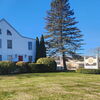
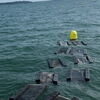


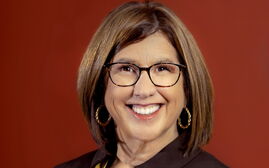
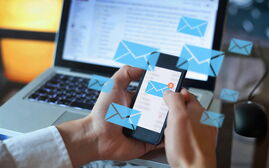

0 Comments